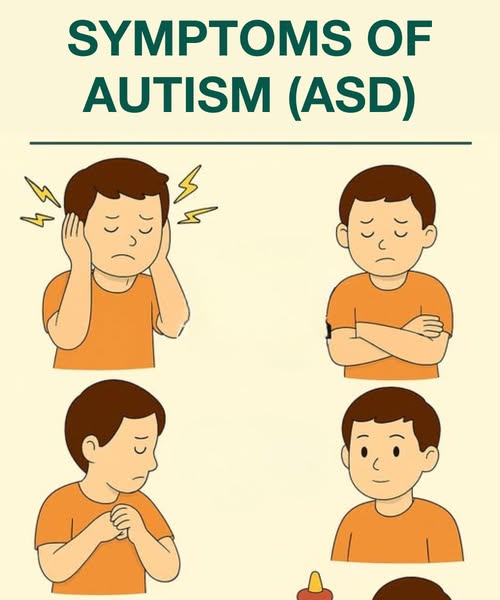Autism Spectrum Disorder (ASD) is a neurodevelopmental condition that shapes how a person interacts, communicates, and experiences the world. It’s not a disease—there’s no “cure”—but with early detection and the right support, people with ASD can lead full, independent, and rewarding lives.
What Does “Spectrum” Mean?
ASD is called a “spectrum” because it shows up in many ways and degrees, from mild to moderate to severe. No two individuals are exactly alike, and each person’s strengths and challenges can be very different.
Common Signs of Autism (ASD)
These are some of the most noticeable symptoms, especially in childhood:
-
Communication challenges:
Difficulty expressing themselves with words, understanding social cues, or following the unspoken rules of conversation (like gestures, tone of voice, or sarcasm). -
Repetitive behaviors:
Repeating movements (like hand flapping), words, or routines. These repetitive actions help provide a sense of security and predictability. -
Avoiding eye contact:
Limited or no eye contact during conversations—often one of the first signs noticed by parents or caregivers. -
Restricted interests:
Intense focus on a particular subject or activity, such as memorizing facts about trains, cars, or dinosaurs, or playing the same song over and over.
Other possible symptoms include:
-
Being very sensitive (or not sensitive) to sounds, lights, textures, or tastes
-
Trouble adapting to changes or unexpected events
-
Limited facial expressions or emotional responses
-
Difficulty with pretend play (like imagining a box is a car)
-
Preference for being alone
-
Struggles understanding others’ feelings (cognitive empathy)
How Is ASD Diagnosed?
A diagnosis involves several steps and professionals:
-
Clinical interviews
-
Observing behavior
-
Tests for language and communication development
-
Assessments by child psychologists or neurologists
ASD can often be detected as early as 18 months. The sooner it’s identified, the sooner helpful interventions can begin.
Support and Treatment for ASD
While ASD can’t be “cured,” early and consistent support can make a significant difference. Helpful approaches include:
-
Establishing clear routines
-
ABA Therapy (Applied Behavior Analysis)
-
Special education tailored to individual needs
-
Speech, occupational, sensory, and emotional support therapies
-
Support for families
-
Inclusive environments in schools and communities
Autism isn’t a tragedy. The real tragedy is missing the signs, not providing support, or failing to understand and accept neurological diversity. When we embrace differences and offer the right help, every person with ASD has the chance to thrive in their own unique way.
